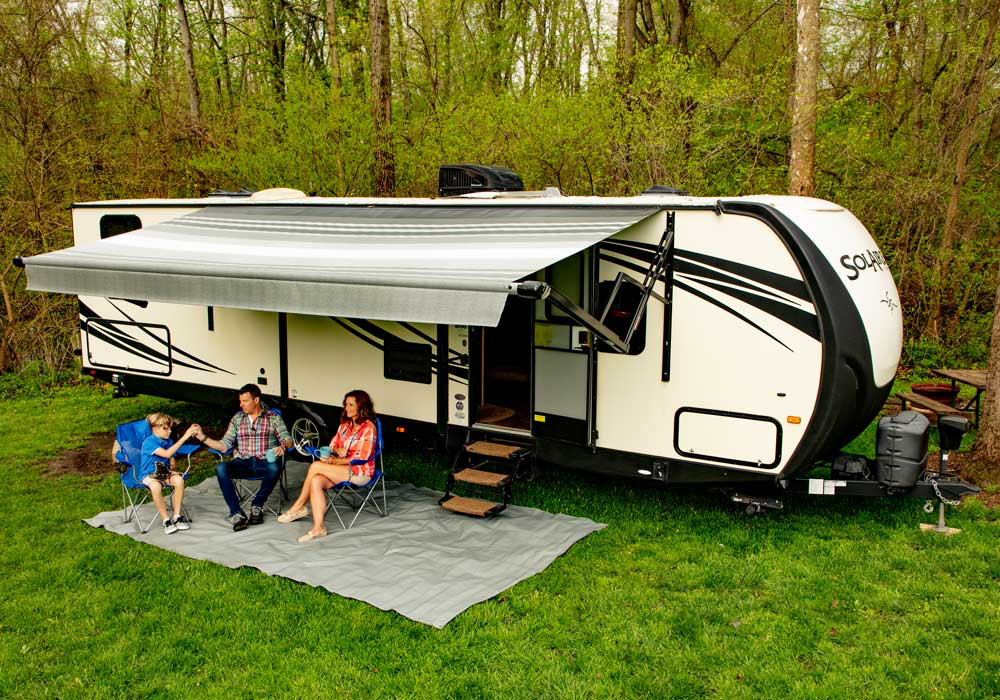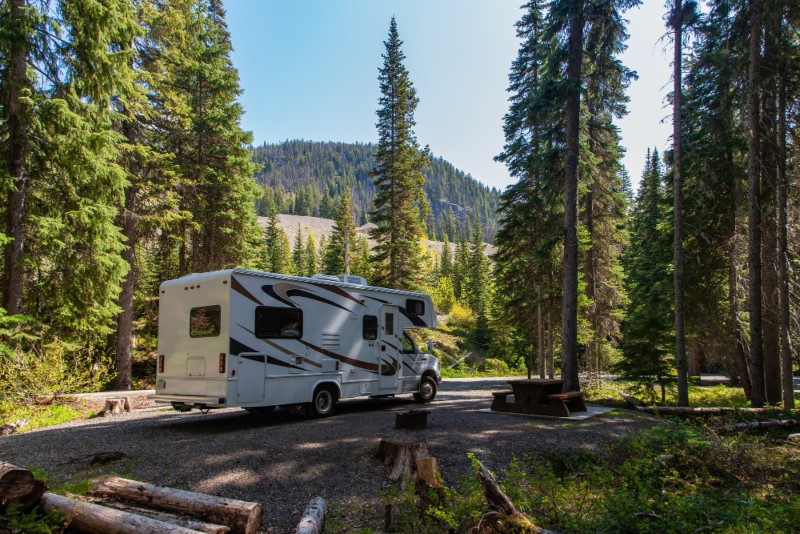RV awnings are the unsung heroes of outdoor comfort. They offer shade, extend your living space, and make every campsite feel like home. But when the wind picks up, even the best awnings can become a liability. So, how much wind is too much for your RV awning to handle?
Let’s break down everything you need to know, including what affects awning wind resistance, how to protect your investment, and why
Carefree customers trust our expert recommendations and highly engineered products to keep their setup safe.
RV Awnings And Wind Resistance
Understanding the basic build and materials of your awning is the first step in determining how much wind it can handle.
Types Of RV Awnings
There are two main categories:
- Manual Awnings, which rely on user setup and takedown
- Powered Awnings, which deploy and retract at the push of a button (some include wind sensors for added protection)
Carefree offers both
manual and powered awnings and provides guidance and resources to help you determine which is best for your rig and lifestyle.
Common Materials Used In RV Awnings
Most awnings are made from one of the following:
- Vinyl: Waterproof and durable but heavier
- Acrylic: Breathable and quick-drying, though not as waterproof
The material plays a big role in how the awning behaves in windy conditions. Heavier vinyl may hold up better, but only when installed correctly and secured properly.
What Wind Speed Can Your RV Awning Handle Safely?
Most RV awnings are rated to handle wind speeds up to 20 to 25 mph. However, that number depends on many factors.
Typical Wind Thresholds by Type
- Manual Awnings: Up to 20 mph with secure anchoring
- Powered Awnings: Up to 25 mph with wind sensor support
- Heavy-duty models: Up to 30 mph, but only when fully secured with tie-downs and stabilizers
Exceeding these speeds increases the risk of tearing, bending, or complete detachment.
Factors That Affect Wind Speed Tolerance
Even a well-rated awning can be damaged if the wind is gusty, inconsistent, or changes direction suddenly.
Factors That Impact Wind Resistance
Many environmental and setup-specific variables can influence your awning’s performance in wind.
Size And Design Of The Awning
Larger awnings act like sails. They catch more wind and are more prone to damage. Smaller awnings or those with wind slits tend to be more stable.
Quality And Installation
An awning is only as good as its installation. Carefree provides professional support to ensure your awning is the right fit for your RV and resources to ensure it is properly installed, aligned, and braced for stability.
Wind Speeds And Environmental Conditions
Campgrounds near cliffs, coastlines, or open plains are more likely to experience sudden gusts. Always check forecasts and be prepared to retract early.
How To Determine Wind Tolerance
So, how do you actually know how much wind your awning can handle? Here’s how to find the real answers.
Manufacturer Guidelines
Always read your awning’s wind resistance rating. Many brands include a maximum wind speed in their manuals or online specifications.
Testing And Real-World Experiences
We’ve advised countless RVers over the years, based on both testing data and real-world feedback. If other travelers in your area are retracting their awnings, you should too.
Wind Tolerance by Awning Type Comparison
| Awning Type |
Material |
Power Source |
Avg. Max Wind Tolerance |
| Manual Vinyl |
Vinyl |
Manual |
20 mph |
| Manual Acrylic |
Acrylic |
Manual |
15 to 18 mph |
| Powered with Sensor |
Vinyl |
Electric |
25 to 30 mph |
| Heavy-Duty Frame |
Vinyl |
Manual or Electric |
30+ mph (with anchors) |
Are Wind Sensors Worth It for Your RV Awning?
Yes. Especially if you’re not always near your RV to retract your awning manually.
How Wind Sensors Work
Wind sensors monitor vibrations or gust speed and automatically retract the awning if wind reaches unsafe levels. Some models allow you to set a custom threshold.
Pros and Limitations
Pros:
- Peace of mind
- Automatic protection
- Compatible with many powered awnings
Limitations:
- May retract too early or too late if not calibrated
- Requires a power source
When and Where to Use One
Wind sensors are most valuable when camping in open, windy regions or when leaving your RV for the day.
Tips For Safeguarding Your RV Awning In Windy Conditions
Securely Anchoring Your Awning
Always use tie-downs, tension straps, and stabilizers, especially in variable wind.
Using Wind Sensors And Supports
Install wind sensors and support poles or arms for added reinforcement.
Retracting The Awning During High Winds
When in doubt, retract the awning. If you see tree branches swaying or hear gusts picking up, it’s safer to retract early.
Signs Your Awning May Be At Risk
Don’t wait for failure. These early signs can indicate that your awning is already under stress.
Visible Wear And Damage
Look for tears, fraying, or sagging in the fabric. Inspect the arms and joints for rust, cracks, or looseness.
Difficulty In Retraction Or Extension
If your awning isn’t moving smoothly, it might be misaligned or already damaged from previous wind exposure.
Stay Ahead of the Storm
The wind doesn’t have to ruin your RV experience. But it can damage your awning if you’re unprepared. Stick to the 20 to 25 mph rule of thumb, use your wind sensor, and err on the side of caution.
Need help choosing a wind-resistant awning or installing the right supports?
Carefree is here to help. With years of experience advising RVers on awning safety and performance, we only design products that stand up to the elements of life on the open road.
FAQ
Can You Leave Your RV Awning Out in the Wind?
Not recommended, especially above 20 mph. Even light wind can cause gradual wear or unexpected damage. If you leave it out, secure it with straps and never leave it unattended during windy weather.
How Much Wind Is Too Much for RV?
Generally, winds over 20 to 25 mph are too much for standard RV awnings. Heavier-duty awnings may tolerate more, but retracting early is always safest.
What Awning Is Best for High Winds?
Powered awnings with wind sensors and reinforced frames offer the best protection. Look for heavy-duty vinyl fabric, stabilizing arms, and tie-down compatibility.
How Do You Secure an RV Awning in High Wind?
Use:
- Tie-down kits
- Awning de-flappers
- Support poles
- Wind sensors
Always retract if gusts exceed your awning’s rated wind speed.

